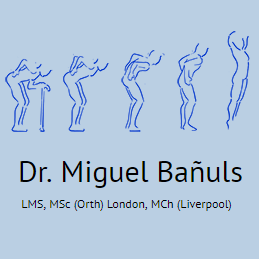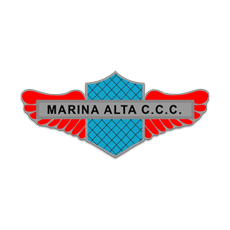Leadership in web design is crucial for fostering successful collaborations and nurturing client relationships. As web designers, we often find ourselves balancing multiple roles, from creative developers to astute project managers. Navigating this multifaceted landscape requires effective project management for web designers, ensuring that client expectations align with technical possibilities. With strong client communication in web design, we can guide projects from concept to completion, preventing stalling and burnout. Ultimately, embracing leadership in web design empowers us to deliver exceptional results while enhancing the client experience.
In the world of digital design, guiding clients through the complexities of site development is essential. This involves not just technical skills but also the capacity for effective client collaboration and communication. A successful web project hinges on clear project management strategies tailored to the unique needs of each client. By taking charge of the design process, we can minimize misunderstandings and pave the way for smoother project execution. Committing to leading clients facilitates their engagement, instilling confidence that their visions will manifest as beautifully functional websites.
Understanding Your Clients’ Needs
As a web designer, understanding your clients’ needs is paramount. Every client comes with different expectations and levels of knowledge about web design. Some may have a clear vision of what they want, while others may be overwhelmed by the process. By taking time to listen and ask probing questions, you gain crucial insights into their goals. This helps bridge the gap between technical jargon and their understanding, ultimately making the project smoother.
Consider not just what they say, but also what they don’t express. Often, clients might hesitate to state their concerns. During initial meetings, focus on creating a safe space for dialogue. Encourage them to voice any uncertainties. This allows you to address potential issues before they escalate, ensuring alignment and reducing friction.

Effective Communication Strategies
Communication is the cornerstone of successful project management. It’s essential to establish a communication framework from the start. Decide on regular check-ins or updates to keep the project on track. Whether it’s weekly calls or bi-weekly emails, set expectations so clients know when to expect communication.
Additionally, clarity is vital. When relaying information, be concise yet comprehensive. Avoid overly technical terms unless necessary; instead, aim for straightforward language. This will not only aid in understanding but also build trust. As you keep clients informed about progress, they’ll feel more connected to the project.
Navigating Challenges with Grace
Every project comes with its share of challenges. Whether it’s a tight deadline or unexpected changes in client preferences, adaptability is key. Remain flexible; if obstacles arise, be ready to adjust the project plan. This requires staying calm under pressure and reassuring your client that solutions are attainable.
For instance, if a client hasn’t supplied required materials on time, rather than expressing frustration, suggest alternative approaches. Offer to brainstorm together or adjust timelines. This not only keeps the project moving but also fosters a collaborative atmosphere.
Building Strong Client Relationships
Building a rapport with clients goes a long way in web design. A strong relationship encourages open communication and collaboration. Engage in small talk or share personal experiences related to the project. This human connection can ease any tension and establish a more friendly, productive environment.
Moreover, show genuine interest in their business. When clients feel valued, they’re more likely to dedicate time and resources to the project. Celebrate milestones, however small, to demonstrate that you’re invested in their success. The more they see you as a partner rather than just a service provider, the smoother the project will unfold.

Read More: How to Help Your Web Design Clients Without Being There
Setting Realistic Expectations
Managing expectations is a vital part of your role as a leader. At the outset of the project, clarify what clients can realistically expect regarding timelines, deliverables, and potential challenges. It’s essential to provide a truthful overview of what you can accomplish while remaining optimistic.
Use past projects as benchmarks to illustrate what is achievable. This paints a clearer picture and helps clients understand the potential scope of the work. By setting these parameters, you minimize the chances of misunderstandings, thereby fostering trust and confidence.
Leveraging Technology
In today’s digital age, leveraging technology can significantly streamline the web design process. Tools like project management software or shared document platforms can enhance collaboration. Introduce clients to these technologies to keep everyone on the same page regarding project status.
Additionally, using design prototypes or mockups can help clients visualize progress. Show them iterative designs and request feedback at various stages. This approach not only keeps clients engaged but also ensures that their vision aligns with the final product.
Fostering a Feedback Culture
Creating a culture of feedback fosters growth and improvement. Encourage clients to share their thoughts on your work at different stages. This can be through formal reviews or informal check-ins after completing various project phases.
Responding to feedback with grace, regardless of its nature, demonstrates your commitment to the project. If a client states the design doesn’t meet their expectations, seek clarity and be willing to make adjustments based on their input. This responsive approach will cultivate a collaborative spirit.
Adapting to Changing Needs

The digital landscape is constantly evolving, and so are client needs. Be prepared to adapt your design strategies based on latest trends or client requests. A great leader understands that flexibility doesn’t mean compromising quality; rather, it reflects a commitment to relevance and client satisfaction.
Encourage clients to share insights from their industries or market shifts they’re noticing. This input often yields valuable information guiding your design decisions. As technology and preferences evolve, maintaining that adaptability sets you apart as a leader in web design.
Emphasizing Result-Oriented Mindset
A results-oriented mindset is crucial when managing web design projects. Clients want to see results, and their satisfaction often hinges on tangible outcomes. Establish clear objectives at the project’s outset, focusing on what you aim to achieve with the design.
Moreover, measure success by user engagement, functionality, and client satisfaction. Encourage feedback after the site launches to assess areas needing improvement. This data-driven approach will help validate your decisions and foster continuity in the client relationship.
Reflecting on Leadership Growth
Lastly, take time to reflect on your growth as a leader in web design. After project completion, conduct a personal review. What strategies worked? Where could improvements be made? This self-reflection will inform your approach in future projects, sharpening your leadership abilities.
Remember, every interaction with clients is an opportunity to grow. Whether it’s a challenge encountered or a success celebrated, each experience contributes to your development. As you hone your skills, you’ll find that your influence as a leader will only strengthen.

Final Thoughts on Leadership in Web Design Projects
In conclusion, being an effective leader for your web design clients is not only about technical skill but also about fostering communication and clarity. Taking charge of a project means actively managing expectations and guiding clients through the complexities of web design. By providing clear outlines and setting realistic deadlines, you can navigate potential stalls in workflow and keep the project on track. This proactive approach not only enhances the client’s experience but also ensures a better final product that meets their needs.
Additionally, embracing your role as a leader can have lasting benefits for your freelance business. Cultivating strong relationships with clients through consistent communication and support establishes trust. Clients are likely to return for future projects or recommend you to others if they feel valued and understood. This will ultimately contribute to a more successful and sustainable freelance career.
Here are some key takeaways to keep in mind when leading web design projects:
– **Establish clear project needs**: Detail what materials are required from your clients to minimize confusion.
– **Set agreed-upon timelines**: Define realistic deadlines to ensure timely delivery of assets and keep the project moving.
– **Maintain open communication**: Regular check-ins and updates can help keep the project in focus for stakeholders and ensure their engagement throughout the process.
The Importance of Project Management Skills
In summary, the role of a project manager is vital when working with web design clients. Many clients may not fully understand the nuances of web development, leading to potential delays and frustration. As a leader, your job is to bridge that gap by providing clarity and direction. By managing client expectations and fostering a collaborative environment, you can empower them to contribute effectively, which ultimately enhances the quality of the project.
Moreover, honing your project management skills can set you apart in a competitive freelance market. Clients appreciate a designer who can not only create visually appealing websites but also manage the workflow efficiently. This dual skill set makes you a valuable asset, allowing you to handle multiple projects while ensuring each one receives the attention it deserves.
To encapsulate the essence of project management in web design, consider the following:
– **Balance authority with collaboration**: While it’s crucial to lead, make sure to encourage your clients’ input.
– **Communicate expectations clearly**: Make it easier for clients to provide the necessary content and assets by outlining specific requirements.
– **Follow up regularly**: Keep the dialogue open to maintain momentum and keep stakeholders engaged in the project’s progress.















